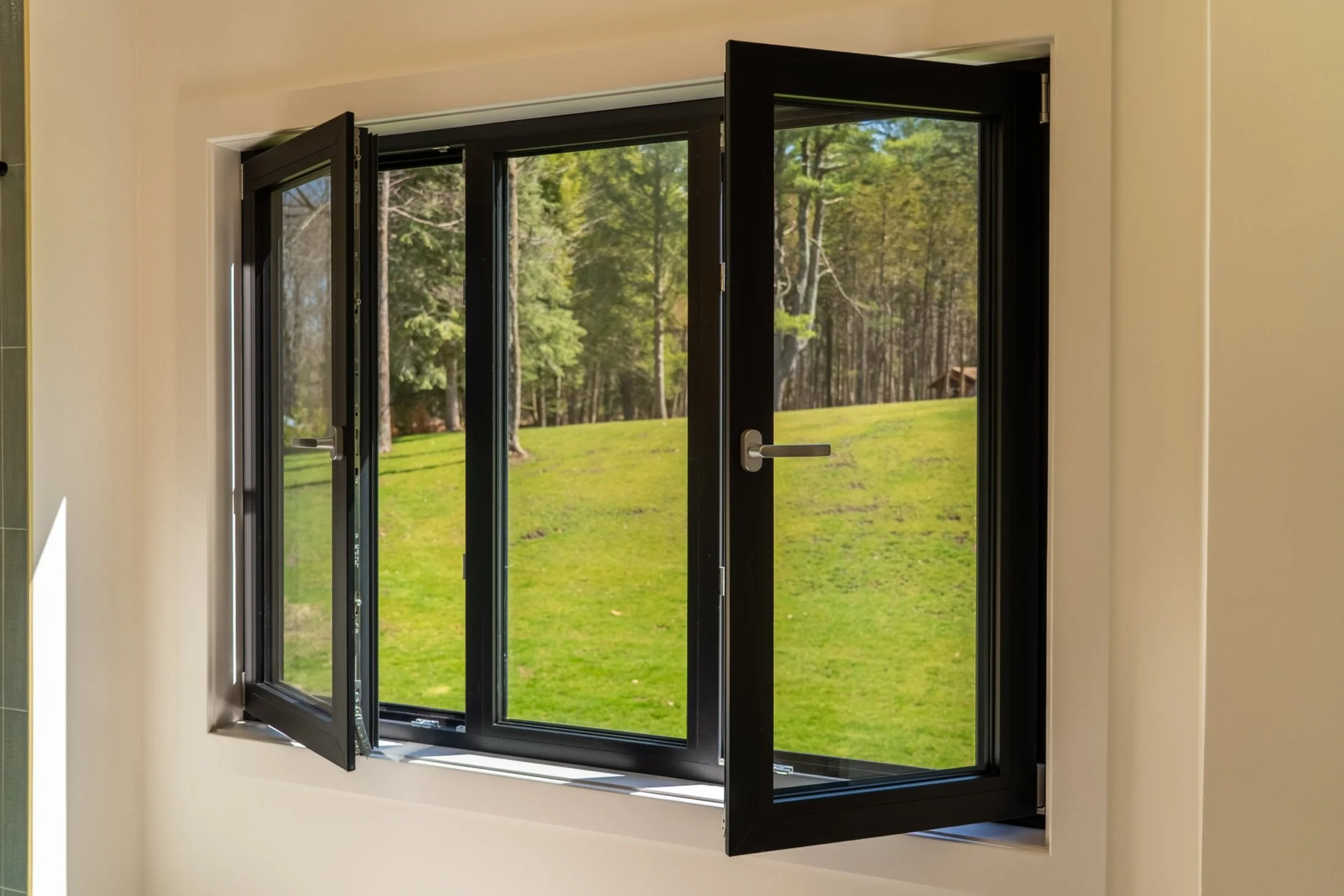How GALAA Windows Help Builders Meet New England Energy Codes
From reducing emissions to improving energy efficiency in homes and multi-family buildings, local regulations are pushing builders to design smarter, tighter, and better-insulated spaces. For builders and contractors across Connecticut and further into New England, that means windows aren’t just a design decision, they’re a code compliance necessity. The good news? GALAA’s European-style windows are engineered to help you meet and exceed performance benchmarks with ease.
What Are the Energy Code Requirements in New England?
States like Massachusetts, Connecticut, and Vermont are leading the way with advanced building codes like:
Most codes now reference benchmarks like:
A maximum U-factor (typically ≤ 0.30) to limit heat loss through windows
A target blower door test result ( ≤ 3.0 ACH50) to ensure airtight construction
A HERS Index rating (55 in some areas) to evaluate total home efficiency
These regional codes are stricter than many national standards, reflecting New England’s colder climate and the drive for net-zero and near-zero energy building goals. Builders must now carefully consider every component of the building envelope, with windows playing a critical role in meeting these energy efficiency targets.
All of this means your windows need to deliver serious performance — thermal, airtightness, and installation included. But what do these certifications, tests, and indexes mean?
U-Factor (≤ 0.30):
A window’s U-factor measures how well it insulates; the lower the number (typically ≤ 0.27 for cold climates), the better it resists heat loss. This metric directly impacts heating costs, as better insulation reduces energy demand during long winters.
Blower Door Test (ACH50 ≤ 3.0):
A blower door test measures a building’s airtightness by calculating how many times air completely changes per hour (ACH); a result of 3.0 or lower means the structure is tightly sealed and energy-efficient. Proper window installation and sealing are essential to pass this test, as even high-performance windows can underperform if air leaks persist around the frame.
HERS Index (42–45 in some areas):
The HERS Index rates a home’s total energy efficiency on a scale where lower scores are better; a score of 45 means the home is 55% more efficient than a standard new build. Windows contribute significantly to this score by affecting both thermal performance and air leakage.
How GALAA Windows Support Code Compliance
GALAA’s tilt-and-turn windows check all the boxes for energy-conscious builders in New England. Designed with multi-chambered vinyl frames, dual or triple gasket sealing, and ultra-tight compression hardware, our windows are built to lock in heat, reduce air leaks, and boost overall building performance.
Here’s how our windows help you stay compliant:
Lower U-Factors, Higher Efficiency
We offer glass packages with U-factors as low as 0.15, outperforming ENERGY STAR Northern Climate Zone requirements and easily meeting code in most Northeast states. This level of performance not only ensures code compliance but also contributes to lower utility bills and increased occupant comfort.
Built-in Air Sealing
Our ProLine and CoreLine windows come standard with double or triple gasket sealing to reduce air leakage—critical for passing blower door tests and keeping homes airtight. This airtightness reduces the need for additional sealing treatments and helps avoid costly rework.
ENERGY STAR® Certified
All GALAA windows meet or exceed ENERGY STAR® certification for the Northern zone, covering Massachusetts, Connecticut, Vermont, New Hampshire, and other cold-climate regions. ENERGY STAR certification offers builders and developers an added layer of credibility when marketing energy-efficient properties.
FAQ: What Builders Need to Know
-
Not always. GALAA’s double-pane options often meet code thanks to our advanced framing and sealing systems. Triple-pane is available if your project demands even greater performance, such as for Passive House projects or areas with extremely low temperatures.
-
Yes. Windows directly impact your HERS Index through both thermal performance and air leakage. Better windows = lower HVAC loads and tighter envelopes, which can be critical in meeting aggressive energy targets.
-
Absolutely. Our multi-point locks and compression seals dramatically reduce infiltration, helping your project stay below 3 ACH50. Proper installation training and support from GALAA further ensure that your buildings maintain airtight integrity.
-
Yes. Many states offer rebates, and qualifying windows may be eligible for federal tax credits under the Inflation Reduction Act—especially if they’re ENERGY STAR® certified. GALAA can assist you in navigating available incentives to maximize project value.
Bonus Benefits of Choosing GALAA
Builders aren’t just choosing GALAA for compliance, they’re choosing us for performance, style, and peace of mind.
Custom sizing & configurations for any plan
Shorter lead times than many import brands, reducing project delays
RC2-rated security for added peace of mind
Contemporary tilt-turn functionality that sets your project apart
Whether you're building a high-efficiency home in Connecticut or a multifamily project in Massachusetts, our team is ready to help you spec the right products, stay compliant, and simplify the entire process.
Build Smarter with GALAA
As energy codes continue to tighten, it pays to work with a window partner who’s already ahead of the curve. With GALAA, you get the performance you need, without sacrificing style, budget, or timeline. We’re here to support your project from spec to install.
Reach out to request performance documentation, code support, or a personalized quote.


